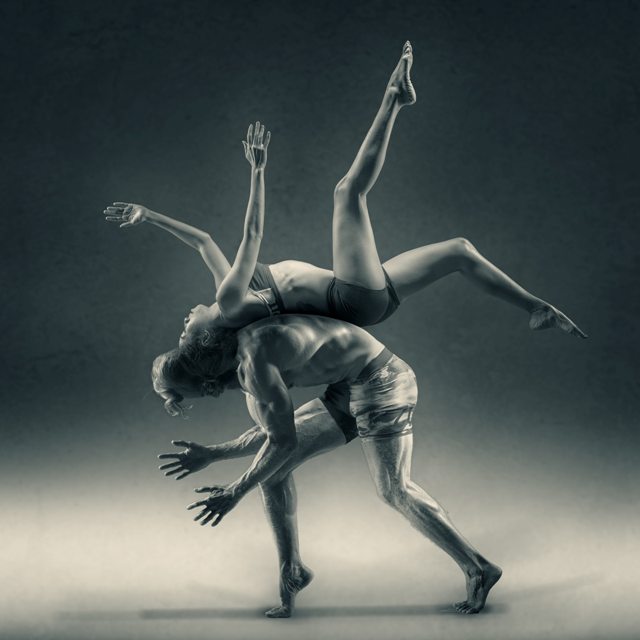It’s been a year now since I stood at the airline counter in the dark hours of the morning—hands shaking and tears streaming down my face—as I pleaded with the woman from the airline to let me board my flight.
She curtly explained to me that I must purchase another ticket departing from my destination on the spot or she could not check me in.
I was fleeing, trying to dodge the emotional shrapnel of another failed relationship. I was exhausted, heartbroken, and alone. It had taken me two years of deliberately dismantling and rebuilding my life after my divorce to open my heart to another. I had read countless self-help books, armed myself with lessons and advice on love and relationships, and courageously taken that leap of faith.
And here I was crying in front of a line of strangers in the Lisbon airport.
In the preceding weeks, I watched my romance—full of promise and delight—quickly dissolve. Voices that once spoke softly with great affection could no longer be heard over the fear, and so they shouted. Insecurities surfaced and possessiveness, jealousy, and resentment soon followed. I felt out of control, confused, and at the mercy of powerful waves of emotion.
From time to time, I would surface again and stand there wondering: who are these people? What are they doing? I felt as though I’d forgotten everything I thought I knew about love, who I was committed to being, and how I want to show up. It was as if we had been given a script, written over lifetimes, and had no choice but to act it out.
I was eventually permitted to board my flight, and after a few days of crushing jet lag and sulking in my room, I decided to drag myself out among the living.
I took long walks, ate beautiful food, and read books in the sun. Mostly, I struggled to make sense of my recent loss. Then I began to feel a familiar stirring, a desire to return to the one place that feels like home no matter where I am in the world.
I found a studio offering a Contact Improvisation dance class and made my way there.
There is an inescapable honesty in dance.
Perhaps it’s the immediacy of the experience, or the natural expression of our animal self. But at times, when words are inadequate, dance is there. For more than 20 years, dance has been my constant companion and an incredible teacher of truth, beauty, heartache, and redemption.
Contact Improvisation is a form of dance that unfolds like a physical conversation. Dancers roll, fall, lift, go upside down, share weight, tumble, and support. It develops our sensitivity to touch, allows us to trust and communicate clearly, and to be present in the moment. It is everything from deeply intimate to playful to athletic. That morning, as I moved in and out of different pairings, I began to notice the dynamics of each dance, like a condensed relationship. Through each dance, I thought about what had eluded me in my previous search for meaning and answers to love and partnership.
This is what I learned:
There is a basis of listening, presence, and holding space that never vanishes.
Throughout the dance, listening and presence are incredibly important to maintain. Distractions fall away and each partner fully attends to the moment and each other. Everyone is honored, cared for, and kept safe.
The dance is created moment by moment.
Each dance is created spontaneously, without agenda or expectation. Dancers enter not knowing how it will unfold, and remain open to what is happening in the moment versus trying to control or steer the dance in a particular way. There’s a mutual sense of curiosity and exploration of what’s possible that allows for invention and keeps the dance interesting.
In this way, the dance becomes full of surprises and discoveries.
Sometimes the dance is clumsy and awkward.
Sometimes it is effortless and fun, or playful and wild. Other times it becomes soft and deeply connected. Through it all, we keep dancing.
There are a myriad of ways that the dance might unfold—but it is always dynamic, shifting, and changing. It is alive. The mood of the dancers, the skill of each, and outside influences can adjust how we relate to each other. With time, we explore many ways of being together and letting one flow into another. None are judged as right or wrong. It’s just what’s happening right now. And in a moment, it will pass and another way of being and relating will arise.
We take turns accepting more of the weight, at times fully supporting one another.
The smallest dancer can support the full weight of a larger one if done intelligently and with sensitivity. We take turns in a playful way, not by keeping score, but by finding times when it makes sense to shift the dynamic.
Through a foundation of trust, listening, and sharing flight, it’s even possible for one partner to be lofted, momentarily weightless, into the air. And even though this is a dance form that relies greatly on the sharing of weight, each takes responsibility for their own safety and well-being. Should someone move away suddenly, we know how to fall and get back up again.
There is a balance of leading, following, and allowing.
Some of the softest moments of my life have been experienced in Contact Improvisation. We dissolve into each other, the floor, the wall. We allow ourselves to be moved. Then we take the lead, listening for the impulse that guides us in a new direction. Neither party is left to do all of the decision-making, nor do we engage in a tug-of-war for control.
Occasionally, one partner may take a moment to dance alone or step away and observe from the outside, but they remain present, listening, and attentive.
When a partner takes a moment to step away from the dance, physical contact may temporarily cease, but a connection remains. Through this attention, no one is left feeling abandoned or lost. They are instead free to explore, to leave, to re-enter, to rediscover. Stepping outside of the dance also offers a different perspective of what is happening. It’s a moment to appreciate what the other partner is exploring alone or with others, and to recognize that they are so much more than a mere extension of ourselves. Then we can return to the dance clear and inspired.
We acknowledge that we are all practicing and learning.
There is no expectation that anyone will do this perfectly, ever. It is a practice, a work in progress that is constantly evolving and growing.
Although we still carry our internal drive to be perfect, the environment is generally one of inclusiveness and tolerance. Blame is shared. We may occasionally step on toes, have a clunky landing, or even hurt each other unintentionally. With practice, the dance becomes easier and more fun. We are able to take greater risks with confidence. We are able to better care for ourselves and each other.
When the dance finds a resolution, we honor the experience and each other.
Some dances last a moment, others develop over a much longer period of exploration. Some end and begin again repeatedly. Once the dance has reached a natural conclusion, we acknowledge each other and our shared experience before parting. And eventually, another dance begins.
~
Despite practicing these skills and this form of dance for many years, I’d failed to transfer these underlying lessons into my personal life and relationships.
I could see where I had stopped listening, where assumptions and expectations overtook curiosity, where my own stubbornness had disrupted the natural dynamic flow of relationships. I saw the power struggles and possessiveness. I saw a lack of imagination in creating love, moment to moment.
Today, I move forward with a different vision, and a commitment to coming back to these lessons whenever I forget myself. I use these as a promise, a prayer. I may fall, tumble, turn upside down, and lose touch. At times, it might be awkward, clumsy, effortless, playful, wild, soft, or deeply connected.
And through it all, I will keep on dancing.
~
Bonus: The One Buddhist Red Flag to Look out for.
~
Author: Heidi Dyer
Image: Robert Collins/Unsplash
Editor: Catherine Monkman
Copy & Social Editor: Callie Rushton











Read 7 comments and reply